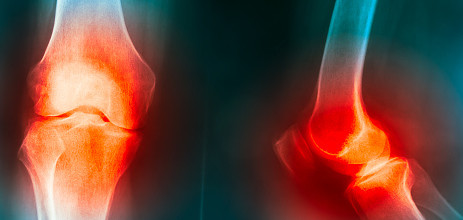
Total Knee Replacement
Total Knee Replacement (TKR), or knee arthroplasty, is a surgical procedure in which the weight bearing surfaces of the knee are replaced. Total knee replacement surgery is typically performed to relieve the pain and disability associated with joint degeneration (most commonly from osteoarthritis) that is associated with weight bearing activities such as standing, walking, and climbing stairs. Annually, there are over 700,000 total knee replacement surgeries performed in the US, making the knee the most commonly replaced joint in the body.
Pre-operative conditioning
Improving physical conditioning prior to surgery has been shown to improve postoperative results, especially in the short term. Attending physical therapy prior to surgery can get you started on improving not only your strength, but also your range of motion and flexibility, as well as your balance and your overall functional capacity. During pre-operative physical therapy, patients can also be educated on what to expect immediately after surgery. They can be instructed in how to use walking aides such as a walker or cane appropriately and safely. They can also be advised on helpful changes they should make in their home, such as the removal of rugs, of the purchase of a shower chair.
The procedure
Total knee replacement surgery involves removing the top part of the shin bone (tibia), and the bottom part of the thigh bone (femur), and replacing these sections of bone with artificial parts, made of a combination of metal and plastic. Oftentimes a cap is also placed on the back of the patella. In addition to replacing the worn areas of the joint, the alignment of the knee may also be corrected to address changes that can occur during joint degeneration.
Postoperative recovery
Following surgery, patients will typically stay in the hospital for 2-3 days. For patients with coexisting medical conditions, this stay may be longer. Following discharge from the hospital, patients can be transferred to an in-patient rehabilitation center for continued care. Some other patients, with adequate family or friend support, who are also recovering well, may be sent directly home, where they will be seen by an in-home physical therapist. Eventually, patients will need to transfer to an outpatient physical therapy center, like Physical Solutions Physical Therapy, for the remainder of their care.
Patients can expect to participate in postoperative physical therapy for 8-12 weeks following surgery. Physical therapy will initially focus on reducing pain and swelling, but will also need to include early range of motion activities and gait training, both vital parts of recovery. As patients progress, their therapeutic activities also need to progress to include strengthening activities, balance training, and additional functional training to help patients recover the ability to navigate stairs normally, and bend to the floor to retrieve items around their home.
Risks
All surgeries, including surgery for joint replacement, carry risks. The most serious risk associated with total knee replacement is the possible development of an infection postoperatively. While infection is a serious concern, the risk in most surgical centers is less than 1%.
The most common complication associated with TKR is the development of deep vein thrombosis (DVT), or a clot. Signs and symptoms of a DVT could include pain, swelling, changes in color (redness), and warmth at the knee, or below into the calf and lower leg. Clots have the potential of breaking off and traveling to the lungs creating a potentially life-threatening situation known as a pulmonary embolism. When symptoms of a potential clot arise, a Doppler Ultrasound would be ordered immediately to determine the cause.
Other risks following total knee replacement could include persistent pain, joint stiffness occasionally necessitating the need for joint manipulation under anesthesia, nerve injuries and prosthesis failure. Obese individuals have an elevated risk of all complications following this surgical procedure, and are typically advised to lose weight before undergoing total joint replacement. Smokers are also advised to quit smoking prior to surgery due to the limitations that smoking can induce on healing potential.
Can the need for a total knee replacement be avoided?
The best way to maintain the health of your knees is to control your weight, and maintain an active lifestyle, including the participation in regular, moderate exercise. For those already suffering knee pain, who have previously been diagnosed with joint degeneration, physical therapy may, in some cases, actually help to delay or avoid altogether the need for a total knee replacement by helping to improve the strength, flexibility and balance control of the muscles that support and control the movement of the knees.
Whether you’re one of those concerned individuals trying to avoid a problem down the road, or someone who already has surgery for total knee replacement scheduled, give our office a call. Physical therapy can probably help you and our clinicians do treat lot of patients with either knee degenerative or following total knee replacement.
Call us today to schedule a consultation.
